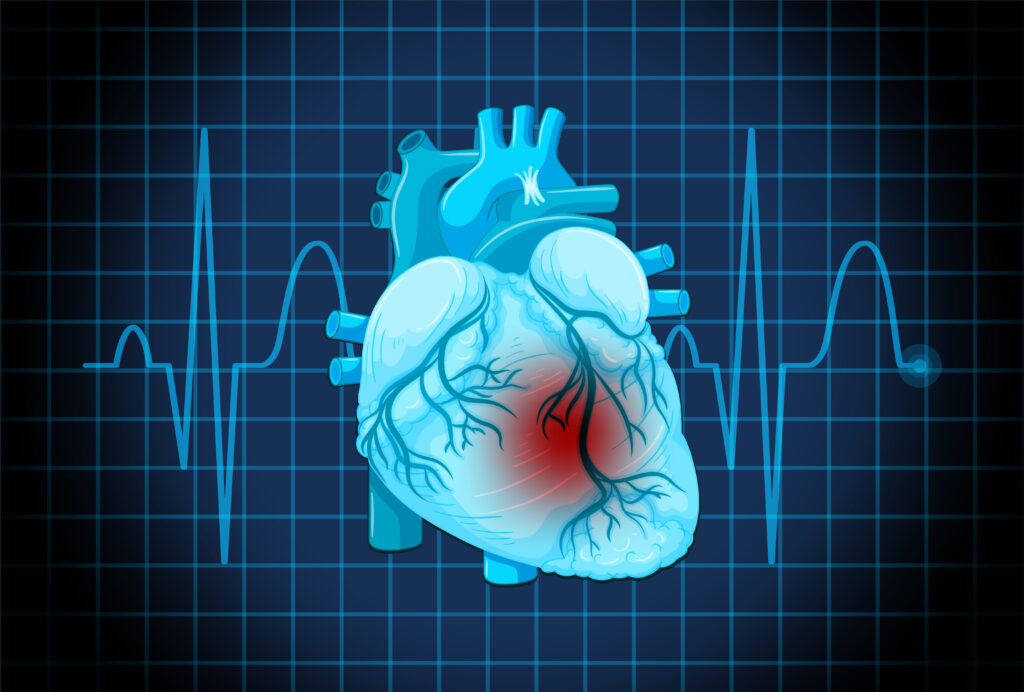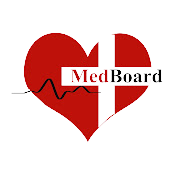Welcome to our comprehensive guide on myocardial infarction, commonly known as a heart attack. In this blog post, we will explore the causes, symptoms, diagnosis, treatment options, and prevention techniques related to this life-threatening condition. Whether you’re a medical student seeking in-depth knowledge or a heart patient looking to understand your condition better, this post will provide you with all the information you need.

Introduction
A heart attack is a medical emergency that occurs when the blood flow to a part of the heart muscle is blocked. This obstruction, often caused by a buildup of fatty deposits in the coronary arteries, starves the heart of oxygen and nutrients. Consequently, the affected heart muscle begins to die, leading to severe consequences if prompt medical intervention is not sought.
Risk Factors and Causes of Myocardial Infarction
Understanding the risk factors associated with myocardial infarction is crucial for prevention and early intervention. While some risk factors cannot be controlled, such as age and family history, others are modifiable through lifestyle changes. Here are some common risk factors:
- Age: The risk of heart attack increases with age, especially for individuals over 65.
- Gender: Men are generally more prone to heart attacks than premenopausal women. However, after menopause, the risk for women catches up to that of men.
- Family history: If you have a close relative who has suffered from a heart attack, your risk may be higher.
- Smoking: Cigarette smoking is a significant risk factor for heart attacks. Chemicals in tobacco can damage blood vessels and decrease blood flow.
- High blood pressure: Uncontrolled hypertension puts strain on the heart and increases the risk of coronary artery disease.
- High cholesterol: Elevated levels of LDL cholesterol (often referred to as “bad” cholesterol) can contribute to plaque buildup, narrowing the arteries and raising the risk of a heart attack.
- Obesity: Being overweight or obese increases the workload on the heart and escalates the likelihood of heart disease.
Aside from these factors, other conditions such as diabetes, stress, lack of physical activity, and a poor diet can also contribute to the development of heart attacks.
Symptoms of Myocardial Infarction
Recognizing the symptoms of a heart attack is crucial for early intervention. The signs can vary between individuals, but common symptoms include:
Chest pain: This is the classic symptom of a heart attack and is often described as a feeling of pressure, tightness, or heaviness in the chest.
- Pain in other areas: Discomfort or pain may radiate to the arms (usually left arm), jaw, neck, back, or stomach.
- Shortness of breath: Experiencing difficulty in breathing or feeling breathless during routine activities can be a sign of a heart attack.
- Sweating: Profuse sweating, often accompanied by cold, clammy skin, can be an indication of a heart attack.
- Nausea and vomiting: Some individuals may feel nauseated or even vomit during a heart attack.
- If you experience any of these symptoms, it is crucial to seek medical attention immediately, as prompt treatment can save lives.
Diagnosis of Myocardial Infarction
The diagnosis of a heart attack involves several steps, including:
- Physical Examination: A healthcare professional will evaluate your symptoms, medical history, and perform a physical examination.
- Electrocardiogram (ECG): This test measures the electrical activity of the heart and can identify abnormalities that suggest a heart attack.
- Blood Tests: Blood samples are taken to measure cardiac enzymes like troponin, which are released when the heart muscle is damaged.
- Imaging Tests: Imaging techniques such as echocardiograms, cardiac CT scans, or cardiac MRI scans may be performed to assess the function and structure of the heart.
Combining these diagnostic tools provides a comprehensive picture to confirm or rule out a heart attack.
Treatment Options
Once a heart attack is diagnosed, immediate treatment is essential to minimize damage to the heart and prevent further complications. The treatment options may include:
Medications: Various medications are used to treat heart attacks, including aspirin, nitroglycerin, beta-blockers, and ACE inhibitors. These medications can help alleviate symptoms, reduce the workload on the heart, and prevent further damage.
Thrombolytic Therapy: In certain cases, medications called thrombolytics may be administered to dissolve blood clots and restore blood flow to the heart.
Coronary Angioplasty and Stenting: This procedure involves inserting a balloon-tipped catheter into the blocked artery and inflating it to widen the artery. A stent may also be placed to keep the artery open.
Coronary Artery Bypass Surgery: In severe cases, bypass surgery may be necessary. This procedure involves using blood vessels from other parts of the body to create detours around the blocked arteries, improving blood flow to the heart.
Cardiac Rehabilitation: Following treatment, cardiac rehabilitation programs are often recommended. These programs focus on lifestyle modifications, exercise, and emotional support to assist in recovery and reduce the risk of future heart problems.
Prevention Techniques
While treatment options for heart attacks have advanced significantly, prevention remains the best approach. Here are some strategies to reduce the risk of myocardial infarction:
- Healthy Lifestyle: Adopting a healthy lifestyle can significantly reduce the risk of heart attacks. This includes regular physical activity, maintaining a healthy weight, practicing stress management techniques, and avoiding tobacco and excessive alcohol consumption.
- Balanced Diet: A diet rich in fruits, vegetables, whole grains, lean proteins, and healthy fats is crucial for heart health. Avoiding saturated and trans fats, excess salt, and refined sugars can help prevent heart disease.
- Regular Medical Check-ups: Regular screenings and check-ups with your healthcare provider can help detect risk factors and early signs of heart disease. It is essential to manage conditions like high blood pressure, high cholesterol, and diabetes effectively.
- Medications: If you have a pre-existing condition that increases the risk of heart attacks, such as high blood pressure or high cholesterol, take medications as prescribed by your doctor. These medications can help manage the condition and decrease the chance of a heart attack.
- Stress Management: Engaging in stress reduction techniques such as meditation, deep breathing exercises, or engaging in hobbies can help lower the risk of heart attacks.
Conclusion
Myocardial infarction, commonly known as a heart attack, is a serious and life-threatening condition. Understanding its causes, symptoms, diagnosis, treatment options, and prevention techniques is crucial for both medical students and heart patients. By recognizing the risk factors, knowing the warning signs, seeking prompt medical attention, and adopting a healthy lifestyle, it is possible to reduce the risk of heart attacks and lead a heart-healthy life. Always remember, your heart matters, so take care of it.


